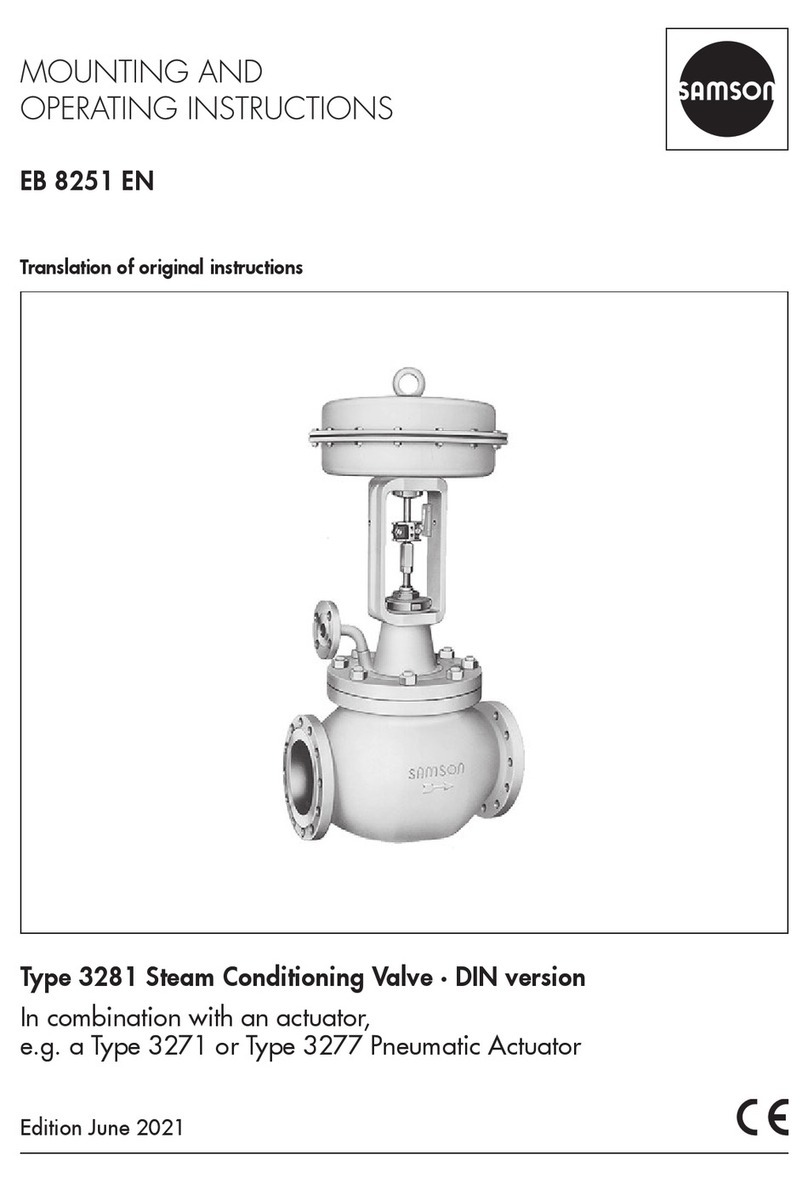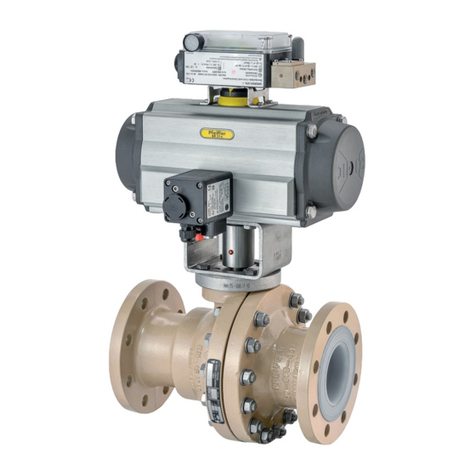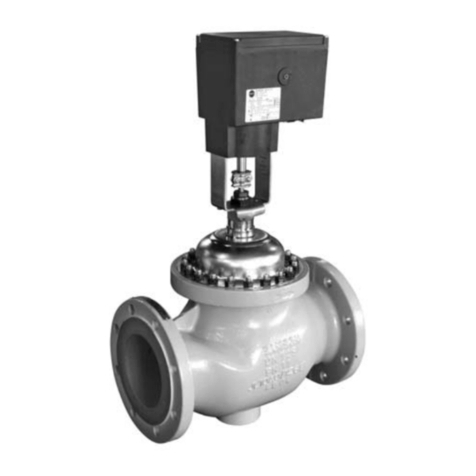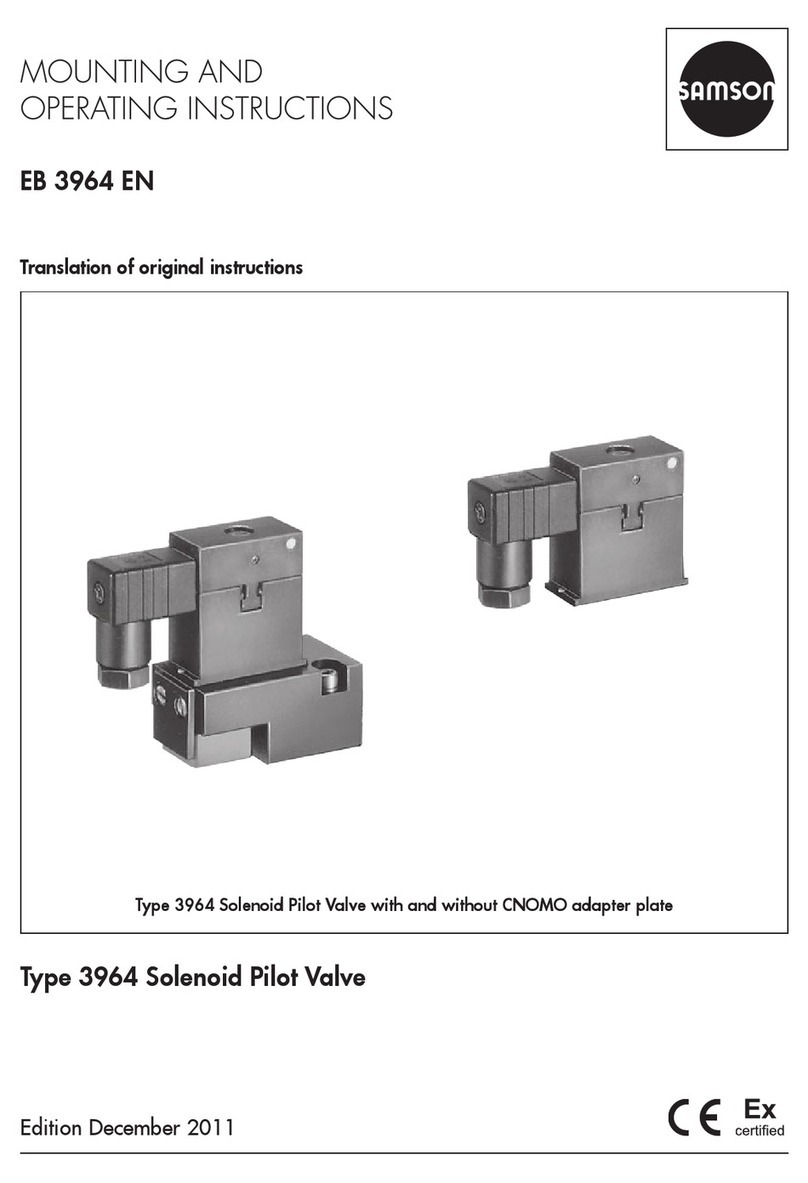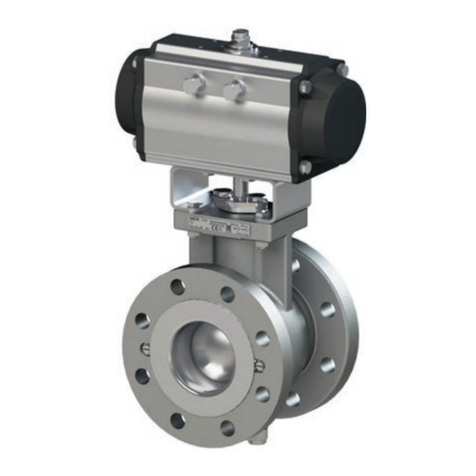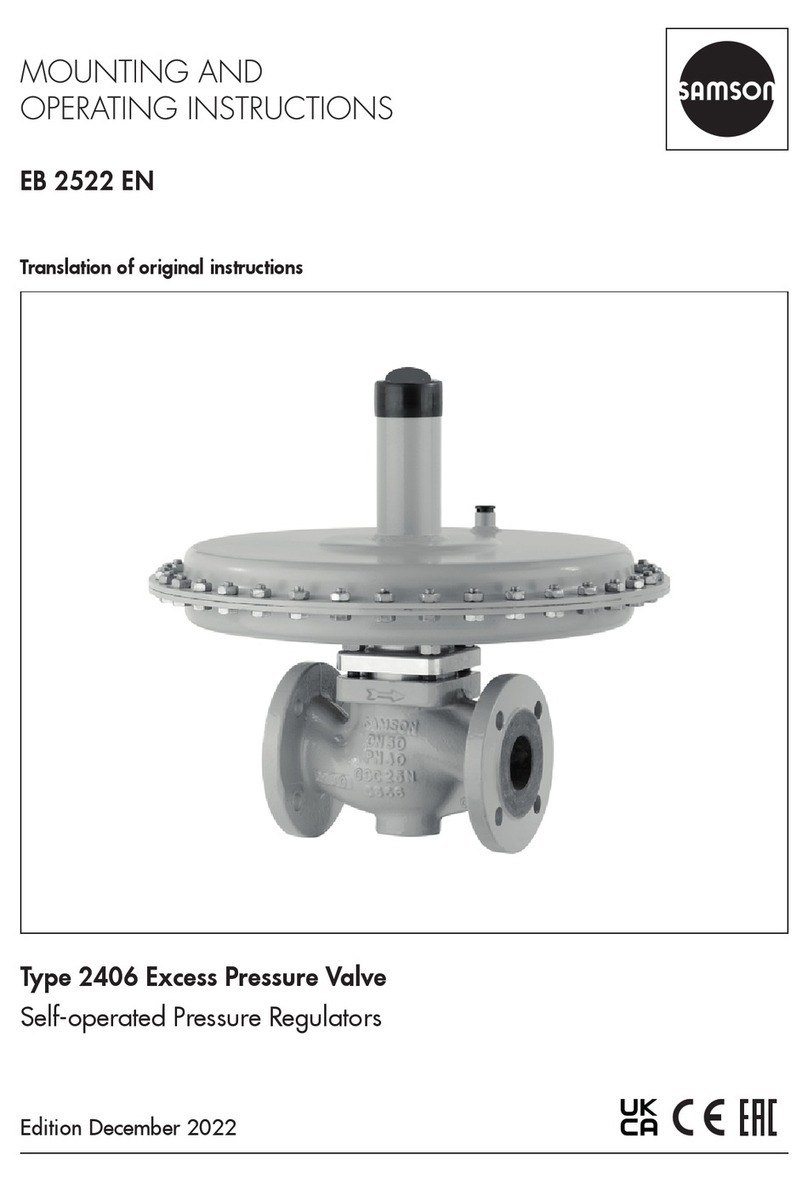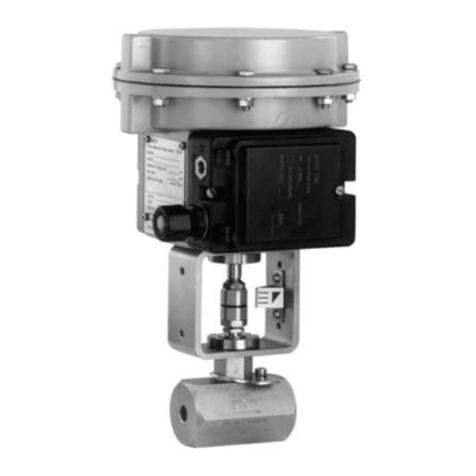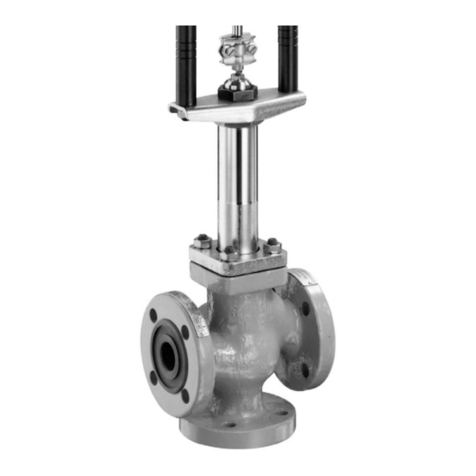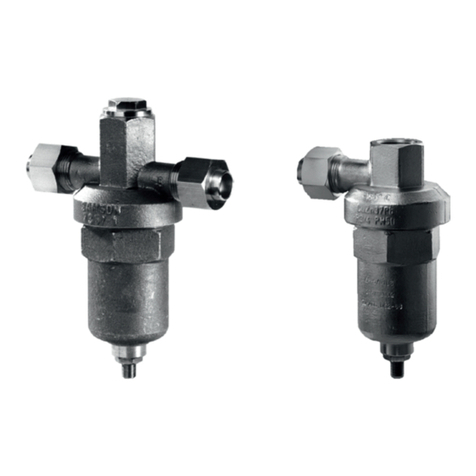
Contents
EB 2551-2 EN 1
1 Safety instructions and measures ................................................................1-1
1.1 Notes on possible severe personal injury ......................................................1-4
1.2 Notes on possible personal injury ................................................................1-5
1.3 Notes on possible property damage.............................................................1-7
2 Markings on the device ..............................................................................2-1
2.1 Nameplate .................................................................................................2-1
2.2 Location of the nameplate............................................................................2-1
2.3 Material numbers........................................................................................2-1
3 Design and principle of operation ...............................................................3-1
3.1 Additionalttings........................................................................................3-3
3.2 Technical data ............................................................................................3-4
4 Shipment and on-site transport ...................................................................4-1
4.1 Accepting the delivered goods .....................................................................4-1
4.2 Removing the packaging from the regulator ..................................................4-1
4.3 Transporting and lifting the regulator............................................................4-2
4.3.1 Transporting the regulator............................................................................4-2
4.3.2 Lifting the regulator .....................................................................................4-3
4.4 Storing the regulator ...................................................................................4-4
5 Installation.................................................................................................5-1
5.1 Installation conditions..................................................................................5-1
5.2 Preparation for installation...........................................................................5-3
5.3 Final installation..........................................................................................5-4
5.3.1 Installing the regulator.................................................................................5-4
5.3.2 Cleaning the pipeline ..................................................................................5-4
5.4 Testing the regulator ....................................................................................5-5
5.4.1 Leak test.....................................................................................................5-6
5.4.2 Pressure test................................................................................................5-6
5.5 Insulation ...................................................................................................5-7
6 Start-up .....................................................................................................6-1
6.1 Start-up and putting the device back into operation .......................................6-2
6.2 Starting up the plant....................................................................................6-2
7 Operation..................................................................................................7-1
7.1 Adjusting the set point.................................................................................7-1

